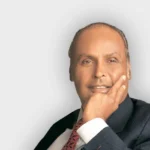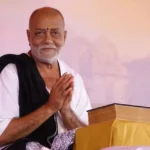Diwali, or Deepavali, translated as “row of lights” in Sanskrit is the biggest and brightest festival for Indians in India and across the globe. Not only is this five-day spectacular holiday celebration (which usually occurs between mid-October and mid-November) a regional observance, it’s a powerful cultural identity celebration. For Hindus, Jains, Sikhs, and some Buddhists, Diwali is a beacon of hope and the spiritual triumph of light over darkness, good over evil and knowledge over ignorance.

A Critical Time for Renewal and Reflection
What intoxicates the senses in Diwali are its myriad stories, which change according to region and religion, and the diverse folklores that punctuate the subcontinent’s myriad cultures.
The Victory of Dharma
Of all the popular legends associated with Diwali, the one that is most widely celebrated in north India is that of Lord Rama. It marks the homecoming of Lord Rama with wife Sita and brother Laxman to the city of Ayodhya after killing the demon king Ravana and serving 14 years of exile. The people of Ayodhya are said to have lit up the whole city with earthen lamps (diyas), to help and welcome their king on the darkest night of the month of Kartika (Amavasya) according to the Hindu lunisolar calendar. It is this event that is celebrated as the ultimate metaphor for light defeating darkness.
Tales: Religious and Regional Variations
In South India it is celebrated as the day preceding Diwali, Naraka Chaturdashi, the day Lord Krishna and his wife, Satyabhama, defeated the demon Narakasura. Again, it is the triumph of divinity and karma over evil oppression.
For traders and especially Western Indian traders, Diwali is the Hindu New Year, the start of a new financial year (Samvat), concentrating their worship on Goddess Lakshmi, the goddess of wealth, fortune and prosperity. Several cultures celebrate the day on which Lambskin chose to wed Lord Vishnu.
Diwali has distinct relevance outside Hinduism, as follows:
Jainism: It celebrates the day when the last great spiritual teacher of the Jains, Lord Mahavira, achieved Nirvana (moksha) or final liberation. The illumination with lamps is a representation of his sacred knowledge.
Sikhism: It is celebrated as Bandi Chhor Divas (Day of Liberation), commemorating the release of the sixth Sikh Guru, Guru Hargobind Ji, and 52 Hindu heads of state from Mughal captivity on this day. The day is celebrated by brightening the Golden Temple in Amritsar.
The Five-Day Framework of Festivity

Diwali is an extravagant, five day festival, including several procedures on each unique day and spiritual involvement.
Day 1: Dhanteras (Dhanatrayodashi)
The festival starts with Dhanteras or the day of wealth. The home is thoroughly cleaned and new utensils, gold or silver items are purchased which is considered very auspicious. This is done to honor Dhanvantari, king of Ayurveda and to welcome goddess Lakshmi in the still empty, clean and the ready home.
Day 2: Naraka Chaturdashi (Choti Diwali)
Suddenly, this known as Choti Diwali (The Small Diwali or the second day of Diwali) marks the day when Krishna killed the demon Narakasura. Rituals Bathing in the early morning with perfumes and oils is part of the ritual and is meant to represent the shedding of undesires. Given a Pakistani twist Homes are then further beautified with rangoli patterns intricate designs in colored rice or flower petals s at the front door retires.
Day 3: Lakshmi puja (the main day)
This is the primary day of Diwali and resembles the darkest night of the moon month. On the main day, families come together for Lakshmi puja in the evening to pray for blessings of wealth and prosperity and for Ganesha puja to request wisdom and the elimination of obstacles. With this posture of worship and devotion, homes are lit up at the end of the puja with countless diyas (clay lamps), candles and electric lights. The evening ends with a fireworks display, representing the destruction of negative energy and expressing joy at the victory of light.
Day 4: Govardhan Puja / Balipratipada
The fourth day varies in its importance across the country. It is celebrated in North India, sometimes as Govardhan Puja, and recalls Lord Krishna’s lifting of the Govardhan Hill to protect the inhabitants of Mathura from the downpour. Among the Parsis of Western India that usually is when the New Year begins (Bestu Varas).
Day 5: Bhai Dooj (Bhai Tika)
Closing day focuses on the bond of brother and sister, that no one can break. Sisters apply tilak on the forehead of their brothers and pray for long life and well-being of their brothers and brothers vow to protect them and gift exchange. Ritual is believed to commemorate Yama (God of Death) visiting his sister Yami.
Regional Diversity and Cultural Impact

Diwali is glorioulsy otherwise celebrated in the North India: Celebrations revolve heavily around the return of Lord Rama to Ayodhya. Luminious lights, intricate Lakshmi-Ganesha pujas, gift exchanging and mutual fireworks display finish up the festivities.
Gujarat and Maharashtra West India: The festival has a business-orientated flavour here, the New Year is observed on the fourth day. In Maharashtra, a feast of sweet and salty dishes (Faral) is prepared and enjoyed.
West Bengal (East India):Gone by a long shot is the gentle tranquillity of Rama. Diwali is the Kali Puja night when the goddess of strength and destruction is worshipped and huge pandal are erected for the purpose.
South India: The celebrations are fierce though often narrowly focused on the second day, Naraka Chaturdashi. “People bathe in oil in a ritual, make regional special delicacies and focus on Krishna’s crushing of Narakasura.”
Diwali transcends the religious rituals, as a vibrant cultural instrument. It’s a time of year when people clean and renovate their houses, wear new clothes and partake in rich culinary traditions-drive them in the exchange of sweet and salty snack foods (mithai). These rituals create a unique sense of togetherness and family bonding. Financially, it is also the biggest spending period in India and provides a major boost to both the retail and manufacturing sectors owing to gift-giving and celebratory shopping.
The Festival of Lights is a vibrant and dazzling display the act of lighting a diya itself is more than just a ritual during this period; it gets philosophical as it feels like illuminating one’s own self, challenging the darkness of ignorance and hopelessness and inviting the light of abundance and optimism in the world. It is the festival that really defines the glowing soul of India.
Also check:- Whispers by the River: Camping Bliss in Himachal




